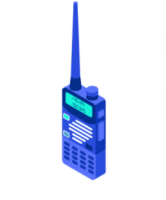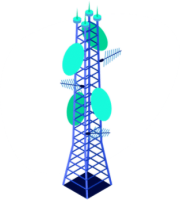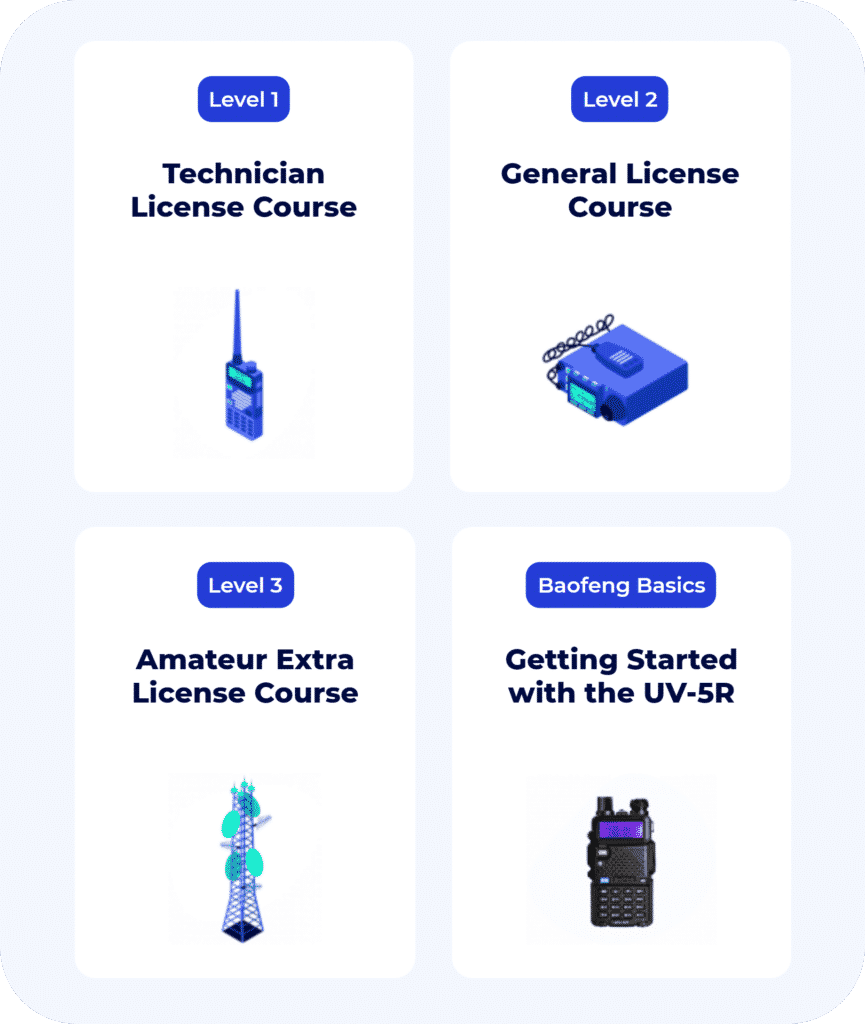If you’re studying for the FCC’s ham radio Technician class license, you’ll notice that some questions are easy, while others seem much harder. Some answers seem logical, while others seem tricky! While you get to study with the correct answers, the trick is to either memorize all the correct answers or to at least understand the subject matter well enough so it’s easy to answer when you take the test.
What are the top 10 questions you should study the hardest for on the FCC’s Technician class amateur license exam?
After a complete analysis of thousands of practice test results, Ham Radio Prep has come up with a list of the top 10 questions that prospective hams have the most difficulty with while studying for their Technician ham test. We’ve provided study materials for thousands of new hams and we have been keeping track of all the answers given during practice tests on our website while our students study. Because we have the ability to keep track of how well our students answer questions — from their first time online until the time they feel confident to go take the Technician test — we’ve assembled a list of the 10 hardest questions on the test.
If you pay particular attention to these 10 questions, it may make the difference of whether or not you pass your exam. On most of these top 10 questions, there is at least a 10-point difference between the overall mean score when the question is answered correctly and when it is answered wrong. On toughest question number 9 below, the difference between answering it right (87 percent mean score) and wrong (73 percent mean score) is the difference between passing your Technician test and failing with a score below 74 percent!
So, pay particular close attention to these 10 questions because they truly are the hardest!
Try to answer these questions by clicking on the options! An explanation to the correct answer will be shown.
10th hardest question:
Which of the following is an appropriate receive filter bandwidth for minimizing noise and interference for SSB reception?
The correct answer is C. 2400 Hz. It is important to always pick the correct receive filter bandwidth to mitigate noise in ham radio. How do you know which bandwidth to choose when operating ham radio? SSB signals are wider than CW signals, so go with the bigger number for SSB! The two different receive bandwidth filters you must know for this test are 2400 Hz for Single Sideband (SSB) and 500 Hz for morse code (CW). Always remember- it will take more bandwidth to carry your voice than a simple CW signal, so you need a bigger matching filter bandwidth!
9th hardest question:
Which of the following is a common repeater frequency offset in the 2-meter band?
The correct answer for this question is B. Plus or minus 600 kHz. However, almost half the number who get it right get the answer wrong by answering A. Plus or minus 5 MHz. That would be the correct answer to the question that asks about the offset for the 70-cm band. The 70-cm band runs from 420-450 MHz and the 2-meter band runs from 144-148 MHz. The 70-cm band has 30 MHz of space, while the 2-meter band has only 4 MHz. To help you remember this, know that 600 kHz is smaller than 5 MHz, and that the 2-meter band has less frequency space, thus, the offset is less. Also, think of the equivalent of 600 kHz, which is 0.6 MHz, thus the offset for a repeater retransmitting on 146.625 MHz would be 600 kHz, or 0.6 MHz lower, which is 146.025 MHz for the repeater input frequency.
8th hardest question:
What property of a radio wave is used to describe its polarization?
The correct answer is A. The orientation of the electric field. There are two primary properties or components of a radio wave – the electric and magnetic fields. However, the only property related to polarization is the orientation of the electric field. Additionally, keep in mind your antenna setup will determine the polarization. So, one good way to remember this is by thinking your radio antenna will need electricity to create your polarized signals!
7th hardest question:
What is the advantage of having multiple receive bandwidth choices on a multimode transceiver?
The correct answer here is B. Permits noise or interference reduction by selecting a bandwidth matching the mode. This question is actually very similar to the 10th hardest question on our list. Remember, it is important to always match the correct filter bandwidth to the correct mode of transmission to prevent any interference. You wouldn’t want to try and send/receive morse code on 2400 Hz, so having the option to change to a 500 Hz bandwidth is helpful!
6th hardest question:
What is another way to specify a radio signal frequency of 1,500,000 hertz?
The correct answer to this question is A. 1500 kHz. You can get here with some simple math and base memorization! Remember, Hertz or Hz is a base unit on the metric system, and you must learn the prefixes to go along with it. 1,000 Hz is equal to 1 kiloHertz (kHz) and 1000 kHz is equal to 1 MegaHertz (MHz). We are given the value 1,500,000 Hz and we need to convert to specify. When you divide 1,500,000 Hz by 1000 to convert to kHz, you can simply move the decimal point three places to get 1,500 kHz.
5th hardest question:
What is the approximate bandwidth of a single sideband (SSB) voice signal?
The correct answer is B. 3 kHz. The appropriate bandwidth for SSB is at 2400 Hz. Then to convert to kHz, take 2400 Hz and divide by 1000 to get 2.4 kHz. The closest or approximate answer here is 3 kHz.
4th hardest question:
What is the function of the SSB/CW-FM switch on a VHF power amplifier?
The correct answer: B. Set the amplifier for proper operation in the selected mode. Answer A talks about changing the mode of the transmitted signal. But the transmitter will be doing that, not the amplifier. The amplifier needs to be told what mode it will be transmitting, which is why B is the correct answer. The transmitter is changing the frequency and a VHF amplifier is only going to work on the 6- or 2-meter bands or the 222-MHz band. You won’t find an amplifier covering more than one VHF band.
3rd hardest question:
What is the approximate bandwidth of a VHF repeater FM phone signal?
The correct answer here is C. Between 10 and 15 kHz. Most of those who answered this wrong guessed B. About 150 kHz. That’s like 10 times the bandwidth of the correct answer. If you remember that CW signals are about 150 Hz (that’s Hertz, not kilohertz) and that SSB signals are narrower than FM signals, you can see that 10 to 15 kHz makes sense.
2nd hardest question:
What happens to current at the junction of two components in series?
The correct answer here is B. It is unchanged. With circuits in series, current is the same to all components. In parallel circuits, the current is divided based on the value of the components. Just remember “unchanged” for series, and “divides” for parallel.
THE hardest question:
Which of the following is an example of remote control as defined in Part 97?
The correct answer is B. Operating the station over the internet, but it is a bit of a trick question. It’s easy to guess C. Controlling a model aircraft, boat or car by amateur radio is the correct answer, because you’re thinking “remote control.” However, the “remote” in this situation really translates to control from a distance.
Summary
We hope this analysis of the toughest Technician amateur radio exam questions helps you pass your test with flying colors! Remember that Ham Radio Prep is here to help you study with our unique online study system and free unlimited use of online test questions to help you get ready for your test day.












